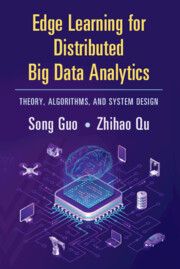Book contents
- Frontmatter
- Contents
- List of Figures
- List of Tables
- 1 Introduction
- 2 Preliminary
- 3 Fundamental Theory and Algorithms of Edge Learning
- 4 Communication-Efficient Edge Learning
- 5 Computation Acceleration
- 6 Efficient Training with Heterogeneous Data Distribution
- 7 Security and Privacy Issues in Edge Learning Systems
- 8 Edge Learning Architecture Design for System Scalability
- 9 Incentive Mechanisms in Edge Learning Systems
- 10 Edge Learning Applications
- Bibliography
- Index
6 - Efficient Training with Heterogeneous Data Distribution
Published online by Cambridge University Press: 14 January 2022
- Frontmatter
- Contents
- List of Figures
- List of Tables
- 1 Introduction
- 2 Preliminary
- 3 Fundamental Theory and Algorithms of Edge Learning
- 4 Communication-Efficient Edge Learning
- 5 Computation Acceleration
- 6 Efficient Training with Heterogeneous Data Distribution
- 7 Security and Privacy Issues in Edge Learning Systems
- 8 Edge Learning Architecture Design for System Scalability
- 9 Incentive Mechanisms in Edge Learning Systems
- 10 Edge Learning Applications
- Bibliography
- Index
Summary
In Edge Learning, training data are non-independently and identically distributed (non-IID). Applying the same learning strategy for all workers fails to work efficiently. In this chapter, we introduce federated learning, where the training data are always non-IID due to data isolation. Then, we summarize enabling technologies for efficient training with non-IID data. We also propose a reinforcement learning-based method that takes non-IID property and resource-constrain into consideration and adjusts the hyper-parameters to accelerate the loss descent efficiency.
- Type
- Chapter
- Information
- Edge Learning for Distributed Big Data AnalyticsTheory, Algorithms, and System Design, pp. 98 - 111Publisher: Cambridge University PressPrint publication year: 2022

